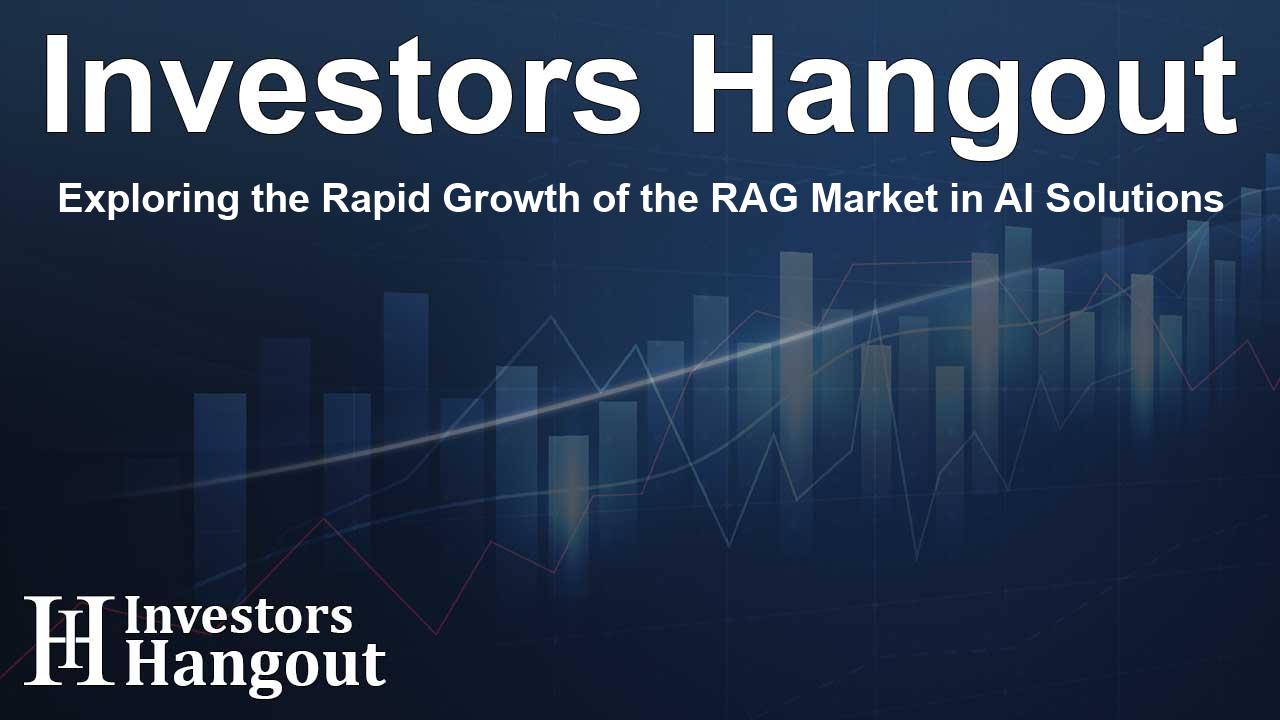Exploring the Rapid Growth of the RAG Market in AI Solutions

Understanding the Retrieval-augmented Generation (RAG) Market
The Retrieval-augmented Generation (RAG) market is increasingly gaining traction in the AI sector. With a predicted value of USD 9.86 billion by the end of the decade, this market showcases a remarkable compound annual growth rate (CAGR) of 38.4%. The driving force behind this expansion is attributed to the rising demand for innovative AI solutions that seamlessly integrate generative AI with retrieval systems.
Market Overview and Future Projections
According to market analysis, the RAG market is projected to grow from USD 1.94 billion by 2025 to USD 9.86 billion by 2030, illustrating staggering growth within this period. This growth is being fueled by the increasing need for efficient, scalable, and reliable AI systems, particularly in enterprise settings. Industries across the board are finding value in RAG architectures, which provide dynamic support for various operational tasks.
Key Drivers of the RAG Market
One of the primary catalysts for the growth of RAG technology is the rapid advancement of hybrid AI models. These models effectively combine generative capabilities with robust retrieval mechanisms, thereby enhancing the foundational architecture of many enterprise applications. Businesses are looking to improve their customer service, compliance monitoring, and overall knowledge management, leading to a surge in RAG adoption.
The Role of Vector Technologies
Another crucial aspect of the RAG market's growth is the development of vector databases and semantic search technologies. With organizations utilizing these innovations, vendors are creating platforms that optimize the retrieval process for large datasets. This efficiency not only reduces latency but also ensures relevant and timely access to the data that businesses need to thrive.
Sector-specific Insights
As we analyze the market further, it's notable that the healthcare and life sciences industries are at the forefront of RAG's adoption. The demand for AI-driven solutions in clinical decision support and personalized treatment is skyrocketing. RAG technology offers privacy-preserving solutions that help organizations comply with regulatory standards while facilitating real-time data access.
Enterprise and Business Applications
The enterprise search application of RAG technology is another area experiencing substantial growth. Organizations are now able to blend traditional search capabilities with generative AI, yielding accurate and contextually aware responses from vast datasets. This is especially beneficial for sectors such as finance and healthcare, where effective information retrieval directly correlates with enhanced customer service and informed decision-making.
Regional Dynamics of RAG Adoption
Regions like Asia Pacific are witnessing noteworthy advancements in RAG technology. Various countries are rolling out RAG-based solutions to cater to their diverse linguistic needs, enhancing customer engagement through contextual search capabilities. The rise of AI investment in countries such as India and China is further solidifying the appeal of RAG technologies, leading to innovations that cater to localized markets.
Emerging Competitors in the RAG Market
Numerous companies are actively contributing to the RAG landscape. Key players include major tech firms that are pushing the boundaries of AI integration. These companies are leveraging their technological expertise to enhance the capabilities of RAG systems, fostering an environment of innovation and adaptability in the ever-evolving AI sector.
The Future of RAG Technology
As the RAG market continues to evolve, its influence is projected to expand across various industries, paving the way for new applications and functionalities. The cross-domain applications of RAG technology signify a shift towards more intelligent and adaptable AI systems that can meet the growing complexities of today's business environment.
Frequently Asked Questions
What is the projected size of the RAG market by 2030?
The RAG market is projected to reach USD 9.86 billion by 2030.
What drives the growth of the RAG market?
The growth is primarily driven by the adoption of hybrid AI models and advancements in vector technology.
Which sector is expected to grow the fastest in the RAG market?
The healthcare and life sciences sector is anticipated to witness the highest growth rate during the forecast period.
How does RAG enhance enterprise search capabilities?
RAG enhances enterprise search by combining retrieval mechanisms with generative AI for accurate and context-aware responses.
What role does Asia Pacific play in the RAG market?
Asia Pacific is emerging as a leader in the RAG market, driven by the demand for multilingual AI solutions and local innovations.
About The Author
Contact Dylan Bailey privately here. Or send an email with ATTN: Dylan Bailey as the subject to contact@investorshangout.com.
About Investors Hangout
Investors Hangout is a leading online stock forum for financial discussion and learning, offering a wide range of free tools and resources. It draws in traders of all levels, who exchange market knowledge, investigate trading tactics, and keep an eye on industry developments in real time. Featuring financial articles, stock message boards, quotes, charts, company profiles, and live news updates. Through cooperative learning and a wealth of informational resources, it helps users from novices creating their first portfolios to experts honing their techniques. Join Investors Hangout today: https://investorshangout.com/
The content of this article is based on factual, publicly available information and does not represent legal, financial, or investment advice. Investors Hangout does not offer financial advice, and the author is not a licensed financial advisor. Consult a qualified advisor before making any financial or investment decisions based on this article. This article should not be considered advice to purchase, sell, or hold any securities or other investments. If any of the material provided here is inaccurate, please contact us for corrections.
